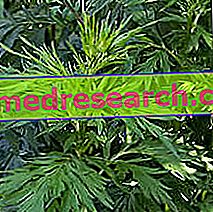What is that
Osteoporosis is a systemic disease of the skeleton, characterized by reduced bone mass and deterioration of the microarchitecture of bone tissue, resulting in an increase in fragility and a predisposition to fractures, especially of the hip, spine and wrist.
Bone Life Cycle
Bone is a living and complex tissue that changes continuously and continuously repairs itself. This process is called " bone remodeling ".

In fact, there are processes of building new bone cells in bone areas that are strengthened and demolition processes in areas that can be lightened.
The calcification and reabsorption processes take place in parallel on the same bone but in different areas, determining the following transformations:
- Fetal phase: the bones have an intermediate structure between that with interwoven fibers (of the embryonic period) and the lamellar one.
- Final phase of infant activity: erosion and lamellar construction processes are activated and the internal calcification systems are already distinguished while the inner medullary canal is increasingly enlarged.
- Adult phase: peripheral constructive activity makes the outer part of the bone thicker and more compact, while the internal medullary canal widens more.
- Senile phase: increases the phenomenon of bone erosion which enlarges and undermines the compactness and solidity of the bone: this is the picture of senile osteoporosis which, by thinning and enlarging the entire texture of the bone tissue, makes the bones porous, light and fragile or more subject to fracture.
Risk factors
- Reduced peak bone mass;
- female sex;
- family history of osteoporosis;
- thinness;
- old age;
- early or surgically induced menopause;
- periods of amenorrhea;
- nervous anorexia;
- poor dietary calcium intake;
- use of certain drugs, such as cortisone drugs and anticonvulsants;
- low testosterone levels in males;
- sedentary lifestyle;
- cigarette smoking, alcohol abuse.
REDUCED BONE MASS : The peak bone mass represents the value of maximum bone mineral density reached in young adult age (around 20-30 years) and depends on both genetic and environmental factors.
FEMALE SEX : especially after menopause, an imbalance occurs between resorption and bone formation. This process is mainly determined by the lack of estrogens, which have a protective action against bone in themselves. The extent of the bone stock with which the woman arrives at menopause is essential for the protection against post-menopausal bone loss. The greater the bone mass reached at a young age (peak bone), the more the woman is protected against post-menopausal bone loss.
EXCESSIVE WELL-BEING can create a risk situation for osteoporosis because adipose tissue is able to produce a certain amount of estrogens, hormones that positively affect bone health.
All about Osteoporosis
Symptoms Osteoporosis Osteoporosis in menopause Osteoporosis and sport Diet and osteoporosis Example diet for the Osteoporosis Football and osteoporosis Salts, Sodium and Osteoporosis Milk, Dairy and Osteoporosis Osteoporosis bone densitometry Osteoporosis: causes and diagnosis Osteoporosis and bone decay Osteoporosis Decalcification Drugs OsteoporosisOsteoporosis - Video: Causes, Symptoms, Cures
X Problems with video playback? Reload from YouTube Go to Video Page Go to Wellness Destination Watch the video on youtube



